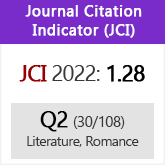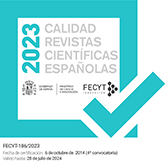Sobre los significados del laurel y sus fuentes clásicas en la Edad Media y el Siglo de Oro
DOI:
https://doi.org/10.3989/revliteratura.2001.v63.i126.212Abstract
As part of the classical heritage, fully valid throughout the Middle Ages and the Golden Age, the laurel was still during this time the symbol of power, the military triumph, the gift of prophecy and, above all, the symbol of poetry as well as the sign of glory which can be achieved through the arts. It was also associated with it the belief, preserved to the present day and very much alive in our classical literature, that laurel cannot be struck by lightning. On the other hand, its branches were both the symbol and trophy of the heroic poetry, whereas myrtle was suitable for the erotic and the ivy for the minor poetry, mainly the pastoral or bucolic, but in spite of this, laurel is often used as seasoning and with its symbolic meaning in eclogues and pastoral books. Finally laurel is associated with love: Petrach, together with his followers, used it to refer to his beloved Laura, by means of the phonic association, and sometimes semantic as well, between Laura and laurel; and as for the Ovidian legend that tells Apollo's love for the nymph Daphne, who was turned into a laurel, its different versions, the serious as well as the burlesque ones, were plentiful during the Renaissance and Baroque periods.
Downloads
Download data is not yet available.
Downloads
Published
2001-12-30
How to Cite
Salazar Rincón, J. (2001). Sobre los significados del laurel y sus fuentes clásicas en la Edad Media y el Siglo de Oro. Revista De Literatura, 63(126), 333–368. https://doi.org/10.3989/revliteratura.2001.v63.i126.212
Issue
Section
Studies
License
Copyright (c) 2001 Consejo Superior de Investigaciones Científicas (CSIC)

This work is licensed under a Creative Commons Attribution 4.0 International License.
© CSIC. Manuscripts published in both the printed and online versions of this Journal are the property of Consejo Superior de Investigaciones Científicas, and quoting this source is a requirement for any partial or full reproduction.All contents of this electronic edition, except where otherwise noted, are distributed under a “Creative Commons Attribution 4.0 International” (CC BY 4.0) License. You may read here the basic information and the legal text of the license. The indication of the CC BY 4.0 License must be expressly stated in this way when necessary.
Self-archiving in repositories, personal webpages or similar, of any version other than the published by the Editor, is not allowed.














